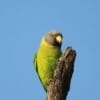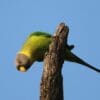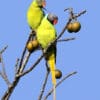Grey-headed Parakeet
Also known as:
Finsch's Parakeet, Eastern Slaty-headed Parakeet, Burmese Slaty-headed Parakeet
Also known as:
Finsch's Parakeet, Eastern Slaty-headed Parakeet, Burmese Slaty-headed Parakeet
DID YOU KNOW?
The juveniles of the Slaty-headed Parakeet (H. himalayana) and the Grey-headed Parakeet are virtually indistinguishable.

Himalayapsitta

finschii
Size:
40 cm (15.6 in)
Weight:
120 g (4.2 oz)
Subspecies including nominate:
one
Colour Adult:
Both adults yellow/green in general; dark grey head; black chin and wide stripe across lower cheeks, continuing as thin line around hindneck; inner median wing coverts has small purple/red patch, nearly always missing in female; central tail feathers long (shorter in female); upper tail purple/blue and widely tipped with yellow/white. Red upper mandible, pale yellow lower. Eye pale yellow.
Colour Juvenile:
Face grey/green; rest of head dull green with faint pale green band below cheeks to hindcrown; wing patch absent; short tail. Beak orange. Eye grey.
Call:
Calls are high-pitched and somewhat harsh. Some shrill screeches at rest; other notes grating. Also more musical notes while perched.
More Information:
Content Sources:
CITES
BirdLife International
Cornell Lab of Ornithology/Birds of the World
A Guide to Parrots of the World, Juniper and Parr, 1998
Parrots of the World, Forshaw and Cooper, 1989.
Parrots of the World, Forshaw, 2006.
Parrots in Aviculture, Low, 1992.
Captive Status:
Rare in captivity.
Longevity:
—
Housing:
Walk-in enclosure, minimum length 4.5 m (13.5 ft).
Diet:
Small seed mix such as: canary, millet and smaller amounts of oats, buckwheat, safflower and a little hemp; limited sunflower seed; spray millet; green leaves such as: Swiss chard, lettuce, kale, sowthistle, dandelion, chickweed; seeding grasses; rearing food made from: hard-boiled egg, wholegrain bread and carrot, all ground to crumbly consistency; fruits such as: apple, pear, banana, oranges; vegetables such as: carrot, celery, green beans and peas in the pod; half-ripe maize; rosehips; vitamin C supplement; complete kibble.
Enrichment:
Provide bird-safe, unsprayed flowering, fir, pine, willow and elder branches and perches, heat sterilized pine cones, wooden, puzzle, foraging and vegetable tanned leather toys.
Nest Box Size:
Nest log 25 cm (10 in) internal diameter and 60 cm (24 in) high.
Clutch Size:
4-5
Fledging Age:
7 weeks
Hatch Weight:
—
Peak Weight:
—
Weaning Weight:
—
World Population:
Unknown. Decreasing moderately rapidly.
IUCN Red List Status:
Near Threatened
CITES Listing:
Appendix II
Threat Summary:
Not globally threatened. Locally common in the least disturbed forest areas. It is uncommon in Thailand and China, and rare in India and Bangladesh. It is affected by capture for the pet trade, with birds seen in local markets in Vietnam, most of them from Myanmar. Has suffered from habitat loss across much of its range, with a 15% reduction in forest cover in its range over the past three generations.
Range:
NE India, in W Arunachal Pradesh, and S Assam, south of Brahmaputra River, east through NE Bangladesh, Burma, N and SW Thailand and Indochina to S China, SE Xizang, and SW Sichuan.
Habitat:
Found up to 2700 m (8856 ft) in oak, teak, cedar and pine forest, open wooded hillsides and agricultural land with tall scattered trees.
Wild Diet:
Diet includes leaf buds and developing cherry (Prunus) fruit, letpan flowers and flowering climbers, seeds of Dendrocalamus longispathus and various figs, grains.
Ecology and Behaviour:
Seen in flocks or family parties, with larger groups reported. Will tolerate lower and more open habitat. Resident, with some seasonal altitudinal movement in response to food availability. Gathers in large flocks at communal roost at dusk.
Clutch and Egg Size:
4-5 rounded eggs, 28.5 x 22.0 mm (1.1 x 0.8 in).
Breeding Season:
January-March; nest is high up in tree cavity.
Related Links:
—
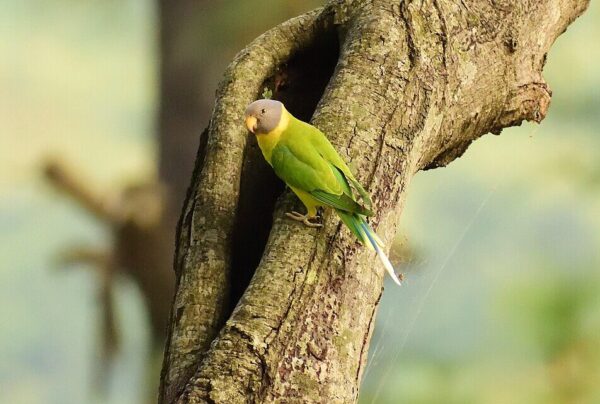
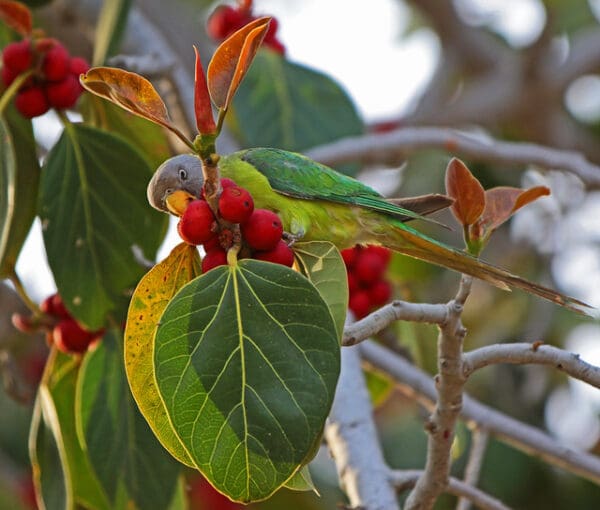
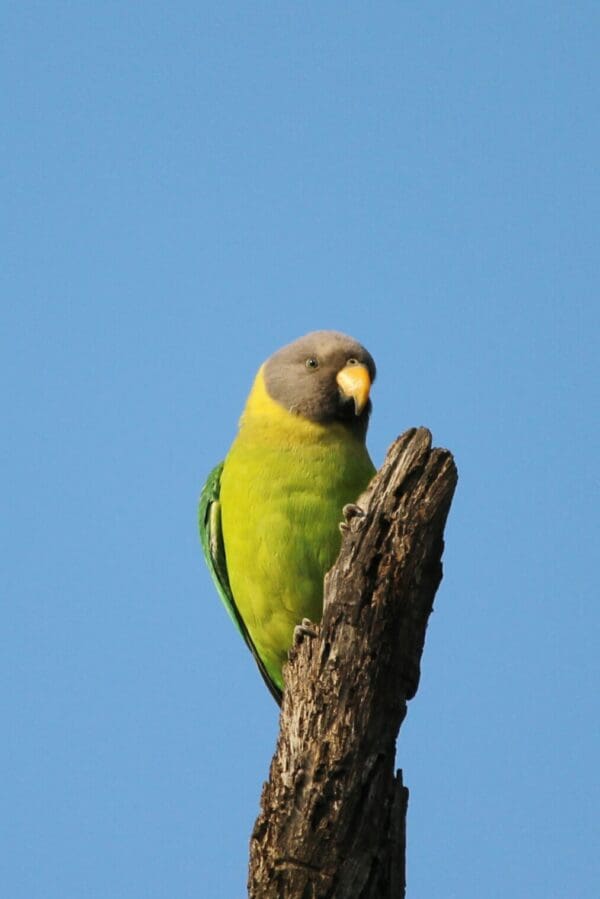
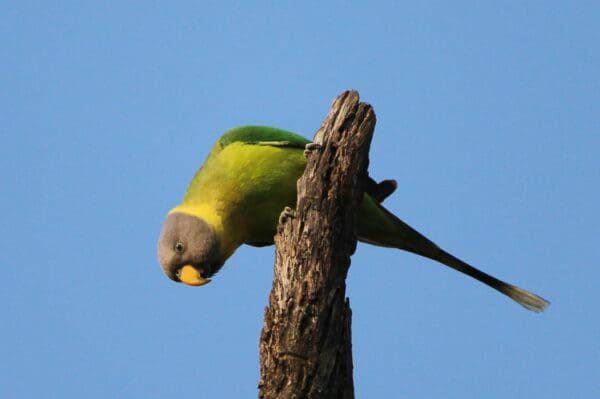
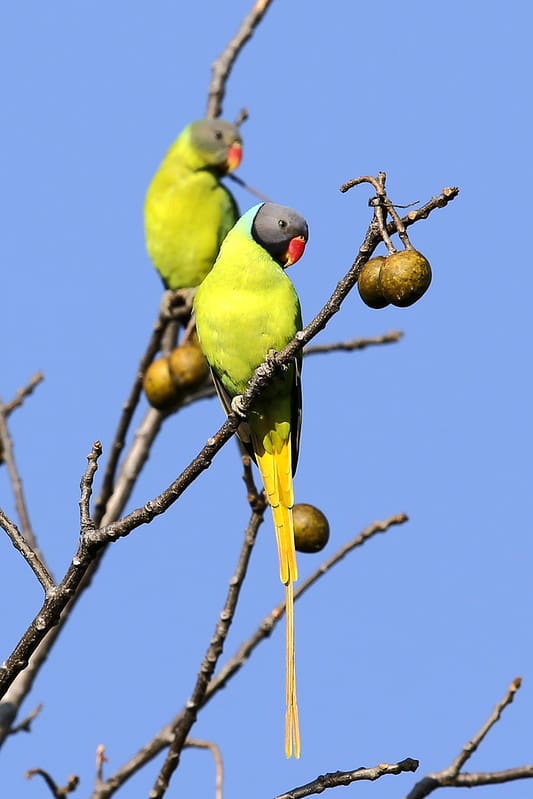
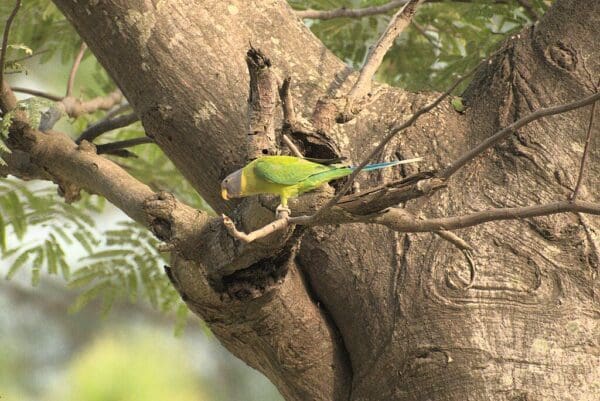
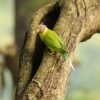
![© vil.sandi [CC BY-SA 2.0] via Flickr A wild Grey-headed Parakeet feeds on fruits](https://parrots.org/wp-content/uploads/2023/01/wpt_Grey-headed-Parakeet_1285-4-100x100.jpg)
